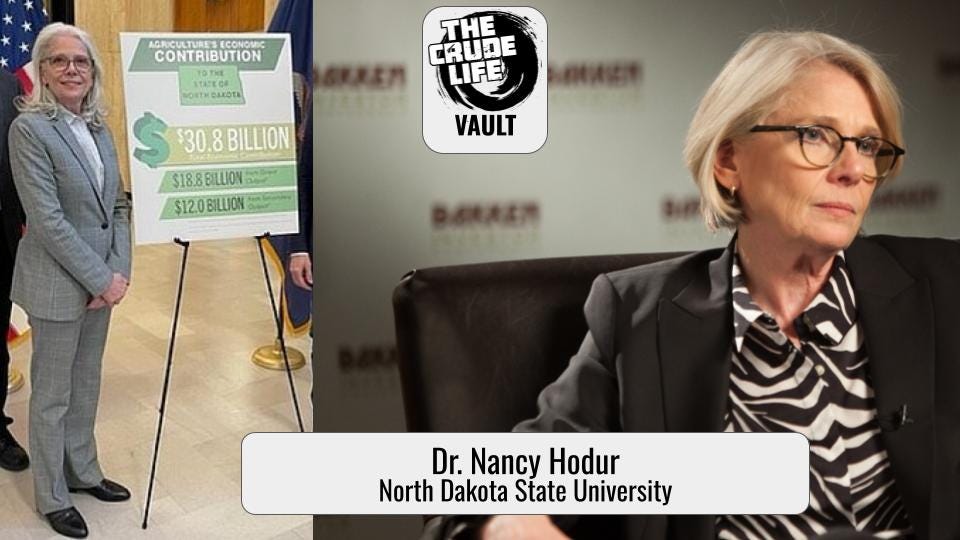Breakup of Standard Oil Becomes Official, Imperial Oil and Bakken Crosses 800,000 Barrels
Today in Energy History for Tuesday July 1, 2025
This is Petro Playback, your daily rewind of pivotal moments in oil and gas history—where futures meet the past, and every well has a story.
It’s July 1, and while the world rolls into the second half of the year, the energy industry marches through another chapter of risk, resilience, and refinery. Today, we dig into events that shook up global supply lines, empowered domestic growth, and sparked innovation in the world's most scrutinized sector.
Let’s crank the pressure and kick off with Event Number One—July 1, 1907: Imperial Oil Strikes Leduc’s Father Well
Technically, the major Leduc strike wouldn’t happen until 1947, but in 1907, Imperial Oil’s drilling operations in Alberta began to build the foundation of what would become Canada's modern oil industry. On July 1 of that year—Canada Day—Imperial commissioned deeper exploration that would, decades later, lead to the largest onshore find in Canadian history. It’s a reminder that in oil, some victories come with a time delay, but they still pay dividends.
Event Number Two—July 1, 1911: The Breakup of Standard Oil Becomes Official
Here’s a landmark moment in oil—and antitrust—history. On July 1, 1911, the U.S. Supreme Court-mandated breakup of Standard Oil officially took effect. John D. Rockefeller’s empire was split into 34 companies, including what would eventually become Chevron, Exxon, and Mobil. The fallout? Rockefeller got even richer. The spinoffs became industrial titans in their own right. And the United States established the energy blueprint for competition, consolidation, and reinvention. July 1 didn’t just break up a monopoly—it birthed a new era of American capitalism.
Event Number Three—July 1, 1979: The Second Oil Shock Deepens
The Iranian Revolution earlier that year had already disrupted global oil markets. But by July 1, 1979, U.S. gasoline shortages were at crisis levels. President Jimmy Carter gave his infamous “Crisis of Confidence” speech just weeks later, and long gas lines became a daily frustration. Imports from the Persian Gulf had collapsed, and OPEC nations were adjusting prices almost weekly. Energy independence, once a political slogan, suddenly became a national security issue. The effects of July 1, 1979, still echo in policy rooms and pipelines to this day.
Event Number Four—July 1, 2013: Bakken Oil Crosses 800,000 Barrels Per Day
While North Dakota’s Bakken Formation had been producing since the early 2000s, July 1, 2013, marked a milestone: daily production exceeded 800,000 barrels. This surge, driven by horizontal drilling and multi-stage fracking, helped the U.S. challenge OPEC dominance and pushed crude prices into global recalibration. The Bakken became not just a field—but a symbol of American energy resilience. It’s no coincidence that major rail and pipeline investments surged right alongside it.
Let’s shift gears and focus on today’s Petro Product Spotlight: Your Toothbrush
That’s right—your humble toothbrush, especially the plastic handle and nylon bristles, is a petrochemical product. Most toothbrushes are made from polypropylene or polyethylene—both derived from petroleum. Nylon, invented in the 1930s by DuPont, is also petroleum-based. So every time you brush your teeth, you’re holding a tiny petroleum tool engineered for hygiene. It’s clean energy—literally.
And now for a Did You Know? that might just polish up your knowledge:
Did You Know?
Petroleum isn’t just ancient plant matter—it’s also pressure-cooked geology. Crude oil forms between 7,500 and 15,000 feet underground where heat and pressure break down organic matter into liquid hydrocarbons. Any deeper—and it’s gas, not oil. Any shallower—and you’ve just got carbon-rich mud. This “oil window” is so precise that geologists use it as a predictor for exploration success. It’s not just about drilling deep—it’s about drilling smart.
Finally, let’s shine our spotlight on a rural community that lives and breathes oil and gas.
Community Highlight: Hobbs, New Mexico
Located in the Permian Basin’s western flank, Hobbs is a town of about 40,000, and it has long been a critical node in America’s energy backbone. Since the 1920s, Hobbs has produced oil and gas, but the shale boom of the 2010s turned it into a logistics and labor hub. With refineries, compressor stations, and oil service yards scattered across the flat, sunbaked landscape, Hobbs is where geology meets grit. Local high schools teach petroleum technology. Coffee shops host lease talks. And nearly every truck has a company logo on the side. Hobbs is proof that rural America isn’t fading—it’s fueling the future.
The Crude Life VAULT
In 2014, Dr. Nancy Hodur, assistant research professor, North Dakota State University, said to take stock in the information provided about the Bakken. She said all their models show despite tremendous growth in the past two years, there is still unbelievable potential in the future. Hodur said currently there are roughly 8,000 wells in the state and the consensus scenario is a projected 40,000 wells. She said this boom is the “real deal,” and it wasn’t going to “poof go away.” She added the oil activity “will change the face of western North Dakota.”
Click here for The Crude Life’s special Building the Bakken Report from 2014
Click here for The Crude Life Vault Interview with Dr. Nancy Hodur in 2015
So there you have it—July 1, where breakups lead to breakthroughs, shortages ignite innovation, and the smallest items in your bathroom carry the fingerprints of a global industry.
That’s today’s Petro Playback, keeping an eye on the wells, the waves, and the wisdom that flow from oil and gas. Until tomorrow—stay sharp, stay fueled, and remember: every barrel tells a story.
Petro Playback prepared and written by Jason Spiess. Spiess is an multi-award-winning journalist, entrepreneur, producer and content consultant. Spiess, who began working in the media at age 10, has over 35 years of media experience in broadcasting, journalism, reporting and principal ownership in media companies. Spiess is currently the host of several newsmagazine programs that air across a 22 radio stations and podcasts worldwide through podcast platforms, as well as a social media audience of over 400K followers.
Everyday your story is being told by someone. Who is telling your story? Who are you telling your story to?
Email your sustainable story ideas, professional press releases or podcast submissions to thecontentcreationstudios(AT)gmail(DOT)com.
CLICK HERE FOR SPECIAL PARAMOUNT + DISCOUNT LINK
The Mission: Impossible collection is now streaming on Paramount+.
Watch Tom Cruise as secret agent Ethan Hunt and his team take on unimaginable assignments to save the world through daring stunts and relentless determination in the iconic movie collection.
Paramount+ offers its subscribers a plethora of quality content.
From instant classic films to banger TV shows like 1883 and Tommy Boy, there’s no shortage of entertainment to explore.
How about the new series Happy Face? It’s getting fabulous reviews.
Start Streaming Today!











